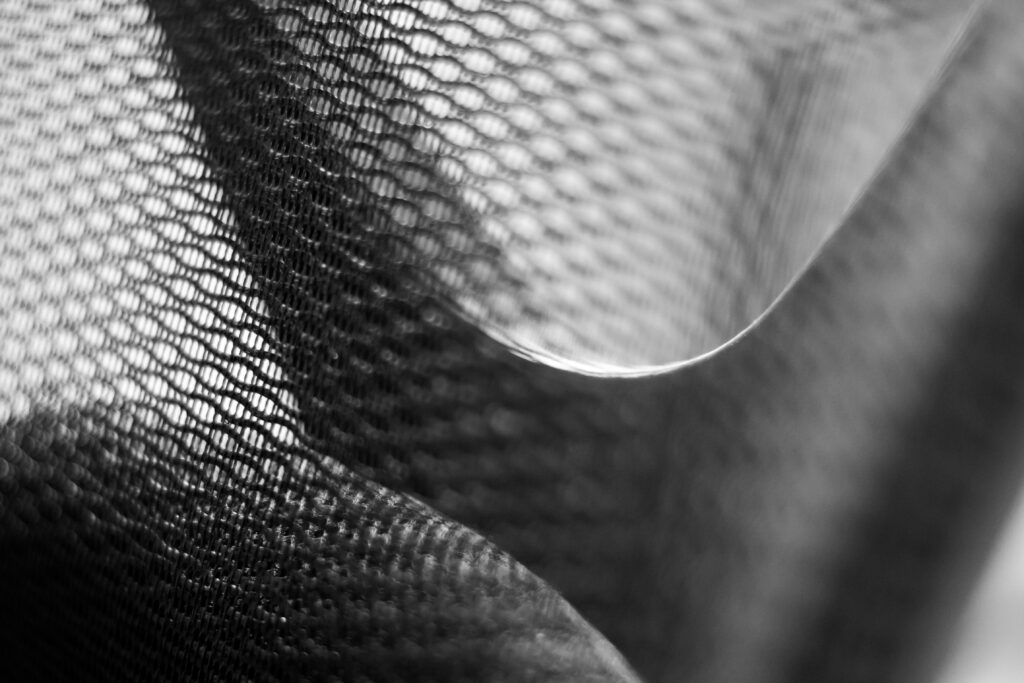
Landscaping fabrics (geotextiles) are the unsung heroes of garden design – preventing weeds, stabilizing soil, and protecting hardscapes. But not all meshes are created equal. For UK landscapers and eco-conscious homeowners, understanding material differences is crucial for balancing performance with planetary health.
Here’s how the top 4 types compare:
⚖️ Comparison Table: Key Fabrics at a Glance
| Type | Best For | Durability | Sustainability | Water Permeability |
|---|---|---|---|---|
| Woven Polypropylene | Driveways, heavy-traffic paths | 20+ years | ❌ Virgin plastic, sheds microfibres | Moderate |
| Non-Woven Polyester | Under decks, French drains | 10-15 years | ▲ 30-50% recycled content possible | High |
| Biodegradable Jute | Slope stabilization, new beds | 2-3 years (degrades) | ✅ Plant-based, plastic-free | Excellent |
| Living Mesh (Coir) | Eco-projects, rewilding zones | 5-7 years | ✅ 100% organic, wildlife-safe | Very High |
1. Woven Polypropylene: The Heavy-Duty Workhorse
- Uses: Under gravel driveways, patios, and paths needing maximum load-bearing.
- Pros: Blocks aggressive weeds (bindweed, horsetail); high tensile strength.
- Cons: Microplastic pollution from UV degradation; landfill-bound at end-of-life.
- Eco Fix: Opt for recycled PP fabrics (rare) or use only where essential.
2. Non-Woven Geotextiles: The All-Rounder
- Uses: Drainage layers, under artificial turf, erosion control on banks.
- Pros: Excellent filtration; allows air/water flow; resists punctures.
- Cons: Most use virgin polyester; production is energy-intensive.
- Eco Fix: Choose recycled PET fabrics (e.g., from bottles) – 45% lower CO₂.
3. Biodegradable Fabrics: The Eco-Short Term Fix
- Uses: Vegetable beds, seasonal projects, temporary erosion control.
- Materials: Jute, hemp, paper pulp, or starch-based PLA.
- Pros: Plastic-free gardening; enriches soil as it decomposes.
- Cons: Weak against perennial weeds; degrades fast in wet UK winters.
- Tip: Layer mulch on top to extend lifespan.
4. Living Mesh (Coir/Biomatting): The Habitat Hero
- Uses: Sustainable slope stabilization, wildflower meadows, riverbanks.
- Pros: Embedded seeds grow through mesh; 100% compostable; prevents erosion for 5+ years.
- Cons: Limited load-bearing; higher upfront cost.
- Innovation: Mycelium-reinforced mats now in RHS trials.
♻️ The Sustainability Deep Dive
The Microplastic Crisis:
- Polypropylene fabrics shed 2.1M microfibres/year per 10m² (University of Plymouth).
- Solution: Install only where essential; use edging restraints to reduce fragmentation.
Recycling Reality Check:
- Most councils don’t recycle geotextiles. Landfill tax costs: £102.10/tonne (2025 rates).
- Solution: Take-back schemes (e.g., EcoTerraSol’s ReMesh program).
Carbon Footprint Winners:
- Coir mats (shipped by sail freight)
- UK-made jute (avoid imports with high transport CO₂)
- Recycled PET (diverts ocean plastic)
🛠️ Pro Installation Tips
- Prep Soil: Remove roots/stones – even biodegradable fabrics fail on bumpy ground.
- Overlap Seams: 15cm minimum to prevent weed breakthroughs.
- Anchor Slopes: Use biodegradable pegs UK (willow or bamboo).
- Top with Mulch: 5-7cm layer boosts efficacy and hides fabric.
